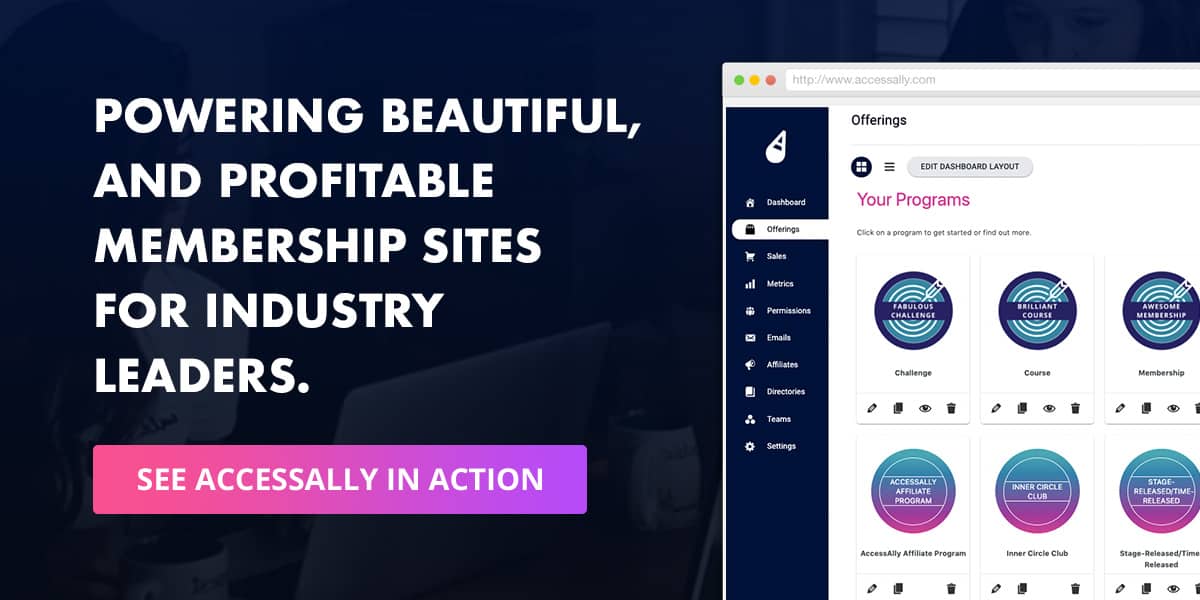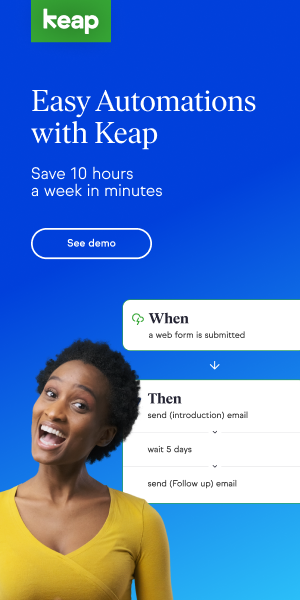Marketing Automation: 9 Ideas to Boost Your Business
Introduction:
Marketing automation for small businesses is a powerful tool that can help them enhance customer engagement, increase conversions, and drive growth. With the right strategies in place, businesses of any size can leverage automated tools to streamline their marketing efforts and save time.
In this article, we’ll explore 9 marketing automation ideas specifically tailored for small businesses to help them maximize their success. These tips will give your business an edge over the competition. from using data-driven insights to personalizing messages, with AI technology. So let’s dive in!
1) Expanding Your Reach: Building a Targeted Email List for Effective Customer Engagement
Building a targeted email list is an essential aspect of any successful marketing strategy. Email marketing continues to be a powerful tool for businesses to engage with their audience directly and nurture relationships. To effectively build a targeted email list, consider implementing the following strategies:
- Offering Lead Magnets: Provide valuable resources, such as ebooks, whitepapers, or exclusive content, as lead magnets. These incentives should align with your target audience’s interests and offer solutions to their pain points. By offering these incentives in exchange for email sign-ups, you create a win-win situation, where potential customers gain valuable insights while you gain their contact information.
- Creating Opt-In Forms on Your Website: Strategically place opt-in forms throughout your website to capture visitor information. Opt-in forms can be placed in prominent positions, such as the homepage, sidebar, or as pop-ups triggered by exit intent or specific actions. Keep the forms simple and concise, requesting essential information like name and email address.
- Leveraging Social Media Ads: Utilize the targeting capabilities of social media platforms to reach potential customers who are likely to be interested in your offerings. Run targeted ad campaigns that promote your lead magnets or exclusive offers, directing users to sign up for your email list. By leveraging social media ads, you can reach a wider audience and attract prospects who are genuinely interested in what you have to offer.
- Implementing Landing Pages: Create dedicated landing pages that highlight the value proposition of your lead magnets or exclusive offers. Drive traffic to these landing pages through various channels, such as social media, paid ads, or blog posts. Make sure the landing pages are optimized for conversions, featuring compelling copy, clear call-to-action buttons, and a user-friendly design.
- Providing Content Upgrades: Enhance the value of your blog posts or content by offering content upgrades. Content upgrades are additional resources or bonuses that readers can access by providing their email addresses. For example, if you have a blog post about “10 Essential Photography Tips,” offer a downloadable checklist or a video tutorial as a content upgrade. This encourages readers to subscribe to your email list to access the valuable bonus content.
Remember, building a targeted email list is an ongoing process. Regularly analyze your strategies, optimize your opt-in forms, and refine your lead magnets based on customer feedback and conversion rates. By continuously improving and expanding your email list, you can establish a direct line of communication with interested prospects and nurture relationships that lead to long-term success.
2) Harnessing the Power of Marketing Automation for Small Businesses: Personalized Email Campaigns
To maximize the potential of marketing automation for small businesses, it is essential to leverage personalized email campaigns. By segmenting your email list based on demographics, purchase history, or engagement levels, you can tailor your content to resonate with each segment. This level of personalization, made possible through marketing automation, significantly boosts open rates, click-through rates, and overall conversions.
Implementing marketing automation for small businesses empowers you to deliver highly targeted and relevant messages to your audience. Through the use of automation tools and customer relationship management (CRM) systems like Infusionsoft, you can streamline the process and ensure timely delivery of personalized emails.
The key lies in analyzing your customer data and identifying common characteristics that define your target segments. By utilizing marketing automation, you can create dynamic emails that adjust based on the recipient’s data. This personalized approach allows you to showcase product recommendations tailored to their purchase history, customized offers that align with their demographics, and relevant content based on their engagement levels.
Monitoring the performance of your personalized email campaigns is vital to optimizing results. By tracking key metrics such as open rates, click-through rates, and conversion rates, you can gauge the effectiveness of your messaging and segmentation strategies. This data-driven approach enables you to continuously refine and enhance your campaigns, ensuring that your marketing automation efforts for small businesses yield the best possible outcomes.
When it comes to marketing automation, true personalization extends beyond surface-level elements like addressing recipients by their first name. It involves understanding their unique needs and delivering content that speaks directly to their preferences, aspirations, and pain points. By harnessing the power of marketing automation, you can build stronger connections, foster customer loyalty, and unlock the full potential of email marketing for your small business.
3) Streamline Your Social Media Presence: Social Media Automation for Small Businesses
In the realm of marketing for small businesses, social media platforms play a pivotal role in reaching and engaging with a wider audience. To maximize the efficiency of your social media efforts, implementing automation is key. By leveraging automation tools specifically tailored for small businesses, you can save time and streamline your social media presence effectively.
One of the primary benefits of social media automation for small businesses is the ability to schedule posts in advance. Automation tools provide the functionality to plan and schedule your social media content ahead of time. This ensures a consistent online presence, even when you may not have the capacity to manually post in real time. By setting up a content calendar and pre-scheduling posts, you maintain an active and engaging social media presence without the need for constant manual intervention.
Furthermore, social media automation allows you to deploy chatbots, which can be invaluable for small businesses with limited resources. Chatbots enable instant engagement with your followers, providing timely support and responses to their inquiries. By automating responses to common queries, you enhance customer experience and satisfaction, even when you are not available to respond personally. Additionally, chatbots can gather valuable insights and data from customer interactions, helping you understand your audience better and refine your marketing strategies.
When implementing social media automation for small businesses, it is essential to strike a balance between automation and the human touch. While automation tools offer efficiency, it is crucial to maintain a personal and authentic connection with your audience. Remember to engage with your followers in real time whenever possible, respond to comments and messages, and foster genuine interactions.
By embracing social media automation, small businesses can optimize their social media efforts, save time, and increase overall efficiency. With scheduled posts and chatbot support, you can maintain an active online presence and engage with your audience effectively. Find the right automation tools that cater to the unique needs of small businesses and strike the perfect balance between automation and authentic human interaction.
4) Enhance Your Website Visitor Tracking: Analyzing Behavior and Leveraging PlusThis Page Triggers
Implementing analytics tools for website visitor tracking provides invaluable insights into user behavior, enabling small businesses to optimize their marketing efforts. By tracking and monitoring which pages visitors access, how long they stay, and the actions they take, businesses can make data-driven decisions that lead to improved conversion rates and maximized marketing effectiveness.
One tool that can further enhance website visitor tracking is PlusThis, which offers a feature called Page Triggers. With Page Triggers, you can apply specific tags to contacts based on how long they have been on a webpage that you have directed them to. This capability allows for advanced segmentation and customization of your marketing campaigns.
For instance, let’s say you have an online store selling fitness equipment. You direct visitors to a landing page promoting a new line of workout apparel. By using PlusThis Page Triggers, you can apply different tags to contacts based on the duration of their visit to the landing page. If a contact spends less than a minute on the page, you can apply a “Casual Interest” tag, indicating a potential customer who may require further nurturing. On the other hand, if a contact spends over five minutes exploring the page, you can apply an “Engaged Shopper” tag, indicating a high-intent customer who may be ready for more targeted and personalized offers.
By utilizing PlusThis Page Triggers in conjunction with your existing analytics tools, you can gain a deeper understanding of visitor engagement levels and tailor your retargeting efforts accordingly. For example, contacts who spend a significant amount of time on a particular product page can be retargeted with personalized ads featuring that specific product, increasing the likelihood of conversion.
Regularly analyzing the data from website visitor tracking and PlusThis Page Triggers empowers small businesses to make informed decisions about their marketing strategies. It allows you to identify which pages or offers resonate most with your audience, enabling you to refine your content and optimize the user experience. By segmenting and retargeting visitors based on their behavior, you can deliver personalized ads that align with their interests, enhancing the likelihood of conversions and driving the success of your marketing efforts.
In summary, by implementing website visitor tracking and leveraging tools like PlusThis with its Page Triggers feature, small businesses can gain valuable insights into user behavior and apply customized tags based on engagement levels. This enables advanced segmentation and targeted retargeting efforts, resulting in improved conversion rates and maximized marketing effectiveness. Utilize these tools to analyze visitor behavior, optimize your campaigns, and deliver personalized experiences that resonate with your audience.
5) Automating Customer Onboarding: A Path to Long-Term Success
In the realm of small business, effective customer onboarding plays a pivotal role in achieving long-term success. By implementing automated onboarding sequences, you can create a smooth and personalized experience for new customers, introducing them to your products or services and guiding them through the initial steps of their journey.
Automated onboarding sequences are a powerful tool that enables you to deliver consistent and engaging content to every new customer. As soon as a customer joins, the automated sequence is triggered, ensuring that no one slips through the cracks and receives a lackluster onboarding experience.
These automated sequences begin by extending a warm welcome to new customers, expressing gratitude for their trust in your business. You can then proceed to introduce them to your products or services, highlighting key features and benefits. Through a series of well-crafted emails or messages, you can provide step-by-step guidance, tutorial videos, or interactive demos, helping customers familiarize themselves with your offerings.
By leveraging marketing automation tools such as Keap or Infusionsoft, you can easily create and schedule these onboarding sequences, streamlining the process and saving valuable time and resources.
However, customer onboarding should not be a one-way communication. It’s equally important to collect feedback during the onboarding process to continually refine your strategies and enhance customer satisfaction.
Integrating the following:
- feedback surveys,
- follow-up emails, or even personalized calls
allows you to:
- gauge customer sentiment,
- identify pain points,
- and address any concerns promptly.
This iterative approach demonstrates your commitment to continuously improving the onboarding experience and catering to the evolving needs of your customers.
The benefits of automating customer onboarding extend beyond time and resource savings. By providing a seamless and personalized onboarding experience, you can establish a strong foundation for customer relationships, boost engagement, and foster loyalty. It sets the stage for a positive customer experience, which can lead to long-term satisfaction and increased retention rates.
In summary, automating customer onboarding is a crucial element in the success of small businesses.
By creating automated sequences, you can:
- welcome new customers,
- introduce them to your offerings,
- and guide them through the initial steps of their journey.
Collecting feedback allows you to:
- refine your strategies
- and continuously enhance the onboarding experience.
Embrace the power of marketing automation tools to:
- create a lasting impression,
- nurture customer relationships,
- and pave the way for long-term success in your small business.
6) Minimize Lost Sales with Abandoned Cart Recovery: Leveraging Marketing Automation
Abandoned cart recovery is a recurring challenge faced by online businesses. However, with the power of marketing automation, you can combat this issue effectively. By implementing automated cart recovery emails, you can re-engage with potential customers who have abandoned their carts, increase conversions, and recover lost sales.
Automated cart recovery emails serve as personalized reminders to customers, gently nudging them to revisit their abandoned carts and complete their purchases. These emails can be triggered automatically when a customer leaves items in their cart without finalizing the transaction or clicking a link in an email that leads them to an order form.
Through marketing automation platforms like Keap formerly known as Infusionsoft, you can create dynamic cart recovery email sequences that cater to each customer’s unique situation. These sequences can include persuasive copy, enticing visuals, and clear calls-to-action that prompt customers to return to their carts.
To further incentivize customers, consider offering discounts or incentives within the recovery emails. For instance, you could provide a limited-time discount code or free shipping to entice customers to complete their purchases. These personalized offers can create a sense of urgency and persuade customers to take action.
Simplifying the checkout process is another crucial aspect of cart recovery. Ensure that your checkout page is user-friendly, intuitive, and optimized for a seamless experience. Remove any unnecessary steps or distractions that might deter customers from completing their purchase. By reducing friction at the checkout stage, you increase the likelihood of successful conversions.
It’s important to note that timing is crucial when sending cart recovery emails. Automated marketing automation platforms can track when customers abandon their carts and send timely reminders. For instance, a recovery email can be sent within a few hours or days of cart abandonment, striking a balance between promptness and not being overly intrusive.
By leveraging marketing automation for abandoned cart recovery, you can regain the attention of potential customers who may have become distracted or hesitant during the checkout process. The personalized and automated nature of these emails ensures consistent follow-up and increases the chances of conversion.
Regularly analyze the performance of your abandoned cart recovery emails using metrics such as open rates, click-through rates, and conversion rates. This data will provide insights into the effectiveness of your recovery strategies and allow you to refine your approaches over time.
In summary, marketing automation plays a critical role in minimizing lost sales through abandoned cart recovery.
By implementing automated cart recovery emails, offering incentives, simplifying the checkout process, and leveraging data-driven timing, you can re-engage with customers, increase conversions, and recover revenue that would have otherwise been lost.
Embrace the power of marketing automation to optimize your cart recovery efforts and drive the success of your online business.
7) Cultivating Customer Engagement and Loyalty: Leveraging Marketing Automation for Meaningful Relationships
In the world of business, engaging and retaining existing customers is just as critical as acquiring new ones. To foster lasting relationships, small businesses can implement automated campaigns that nurture customer engagement and loyalty. By leveraging marketing automation, you can create personalized and targeted messages that resonate with your customers and foster a sense of appreciation and loyalty.
One powerful strategy is to send personalized messages on special occasions or milestones, such as birthdays or anniversaries. Automated emails or notifications that celebrate these moments can make customers feel valued and appreciated. By acknowledging these significant events, you deepen the connection and reinforce the idea that your business genuinely cares about its customers on an individual level.
Furthermore, offering exclusive discounts or promotions to loyal customers can be a powerful way to maintain their engagement. By segmenting your customer base and targeting those who have demonstrated loyalty or made repeat purchases, you can create personalized campaigns that reward them for their continued support. These exclusive offers make customers feel special and appreciated, fostering a sense of loyalty and incentivizing them to choose your business over competitors.
Marketing automation platforms like Keap formerly known as Infusionsoft offer features that enable you to track customer interactions and behavior. With this data, you can implement re-engagement campaigns for customers who haven’t interacted with your content or made a purchase in a while. Automated emails or messages can be triggered to gently remind them of your brand’s value, provide relevant updates or offers, and encourage them to re-engage. This personalized outreach can reignite their interest, address any concerns or barriers they may have, and ultimately bring them back into the fold.
To build trust and encourage repeat business, it’s important to consistently deliver high-quality content and experiences. By providing valuable information, educational resources, or entertaining content through automated campaigns, you demonstrate your expertise and reinforce your position as a trusted source in your industry. This consistent engagement keeps your brand top of mind and encourages customers to return for future purchases or interactions.
Regularly analyze the performance of your automated campaigns using metrics like open rates, click-through rates, and conversion rates. This data provides insights into the effectiveness of your engagement strategies and allows you to refine your approaches over time. Additionally, collect feedback from your customers to understand their needs, preferences, and pain points, enabling you to continually improve your engagement efforts.
In summary, leveraging marketing automation for customer engagement and loyalty is a powerful strategy for small businesses. By implementing automated campaigns that send personalized messages, offer exclusive discounts, reward loyalty, and re-engage inactive customers, you build trust, foster long-term relationships, and encourage repeat business. Embrace the power of automation to create meaningful connections, cultivate customer loyalty, and drive the ongoing success of your business.
8) Harnessing the Power of Marketing Analytics: Measuring and Optimizing Marketing Automation with Keap’s Tag Application
Measuring the success of your marketing automation efforts is crucial for small businesses.
By defining key performance indicators (KPIs) such as email open rates, conversion rates, and customer retention rates, you can gauge the effectiveness of your strategies. To delve deeper into the data and gain actionable insights, leveraging marketing analytics tools is essential.
One powerful tool that small businesses can utilize is Keap’s tag application. With this feature, you can track and apply tags to contacts based on their actions, such as link clicks in your emails. This allows you to segment your audience further, enabling more targeted and personalized communication. For example, you can tag contacts who click on a specific product link, indicating their interest, and subsequently tailor your follow-up campaigns accordingly.
To effectively measure your marketing automation efforts, start by clearly defining your KPIs. Email open rates reflect the effectiveness of your subject lines and overall email content, while conversion rates track the percentage of recipients who take the desired action, such as making a purchase or filling out a form.
Customer retention rates measure the effectiveness of your efforts in fostering loyalty and repeat business. By monitoring these metrics, you can identify areas that require improvement and make data-driven decisions to optimize your marketing automation strategies.
Leveraging marketing analytics tools, such as Google Analytics or Keap’s built-in analytics dashboard, allows you to track and analyze these metrics comprehensively.
These tools provide valuable insights into customer behavior, campaign performance, and the effectiveness of your marketing automation efforts. For instance, you can track the conversion rates of specific email campaigns or the impact of different lead nurturing sequences on customer retention.
Regularly reviewing and analyzing your marketing analytics data empowers you to make informed decisions and refine your strategies. By identifying patterns, trends, and areas of improvement, you can optimize your marketing automation efforts to drive better results. For example, if you notice a low email open rate, you can experiment with different subject lines or segment your audience further to deliver more targeted content. Continuously testing and iterating based on the insights gained from marketing analytics ensures ongoing improvement and success.
In summary, implementing marketing analytics is essential for measuring the success of your marketing automation efforts. By defining KPIs, leveraging tools like Keap’s tag application, and analyzing metrics such as email open rates, conversion rates, and customer retention rates, you can gain valuable insights into the effectiveness of your strategies.
This data-driven approach enables you to make informed decisions, optimize your marketing automation, and drive better results for your small business. Embrace the power of marketing analytics to unlock the full potential of your marketing automation efforts and achieve long-term success.
9) Driving Continuous Improvement: Optimizing Marketing Automation Efforts
Marketing automation is an iterative process that requires ongoing evaluation and improvement. To ensure optimal results, it is essential to regularly analyze your automation workflows, identify areas for enhancement, and implement new strategies. By continuously refining your approach, you can optimize your campaigns and achieve better outcomes over time.
- Start by thoroughly analyzing your automation workflows to gain a comprehensive understanding of their performance.
- Examine key performance indicators (KPIs) such as open rates, click-through rates, and conversion rates to identify patterns and trends.
- This evaluation will help you pinpoint areas that require improvement or optimization.
Identify specific aspects of your automation workflows that could be enhanced, such as subject lines, content, or timing. Pay attention to the effectiveness of your subject lines in capturing recipients’ attention and encouraging them to open your emails. Assess the relevance and impact of your content in driving engagement and conversions. Additionally, evaluate the timing of your automated messages to ensure they align with your audience’s preferences and behaviors.
To optimize your marketing automation efforts, explore new strategies and approaches.
- Experiment with alternative subject lines that are more compelling or impactful.
- Consider diversifying your content by offering different types of valuable information or personalized recommendations.
- Additionally, explore various timing options to identify the optimal sending schedule for your target audience.
As you implement new strategies, closely monitor their performance. Continuously track the analytics and KPIs associated with your automation workflows to evaluate the impact of the changes you’ve made. Assess whether the adjustments lead to improved open rates, click-through rates, and conversions. Use these insights to inform further refinements and adjustments.
Remember, continuous optimization is a process that requires dedication and an iterative mindset. Regularly assess the effectiveness of your automation workflows, experiment with new strategies, and adapt your approach based on the data-driven insights you gather. By consistently refining and optimizing your marketing automation efforts, you can enhance engagement, nurture relationships with your audience, and drive better results for your small business.
Continuous optimization is vital for maximizing the effectiveness of your marketing automation.
- Regularly analyze your workflows,
- identify areas for improvement,
- and implement new strategies to achieve better outcomes.
By evaluating and refining your automation efforts, you can enhance engagement, increase conversions, and drive the success of your small business through marketing automation.
—-
In conclusion, marketing automation offers immense benefits for small businesses, enabling them to streamline processes, enhance customer engagement, and drive growth. By implementing targeted email campaigns, leveraging social media automation, optimizing landing pages, recovering abandoned carts, nurturing customer relationships, and continuously refining strategies, small businesses can unlock the power of marketing automation and achieve long-term success in today’s digital landscape. Embrace these ideas, harness the potential of marketing automation, and position your small business for sustainable growth and prosperity.
Deirdre Shockley
CEO
Deirdre Shockley is an Infusionsoft / Keap Certified Partner and WordPress enthusiast with over 15 years of experience in digital marketing.
She has successfully managed digital campaigns for a diverse group of clients, including lawyers, authors, fitness professionals, and medical spas, and a publishing company.
Deirdre's true passion lies in creating engaging membership websites using platforms like Keap, AccessAlly, and Memberium. Clients appreciate her technical skills and approachable nature, as she understands their vision and reflects their brand identity.
When not designing websites, Deirdre finds inspiration in kayaking and yoga. Trust Deirdre to deliver exceptional digital experiences for your business.










